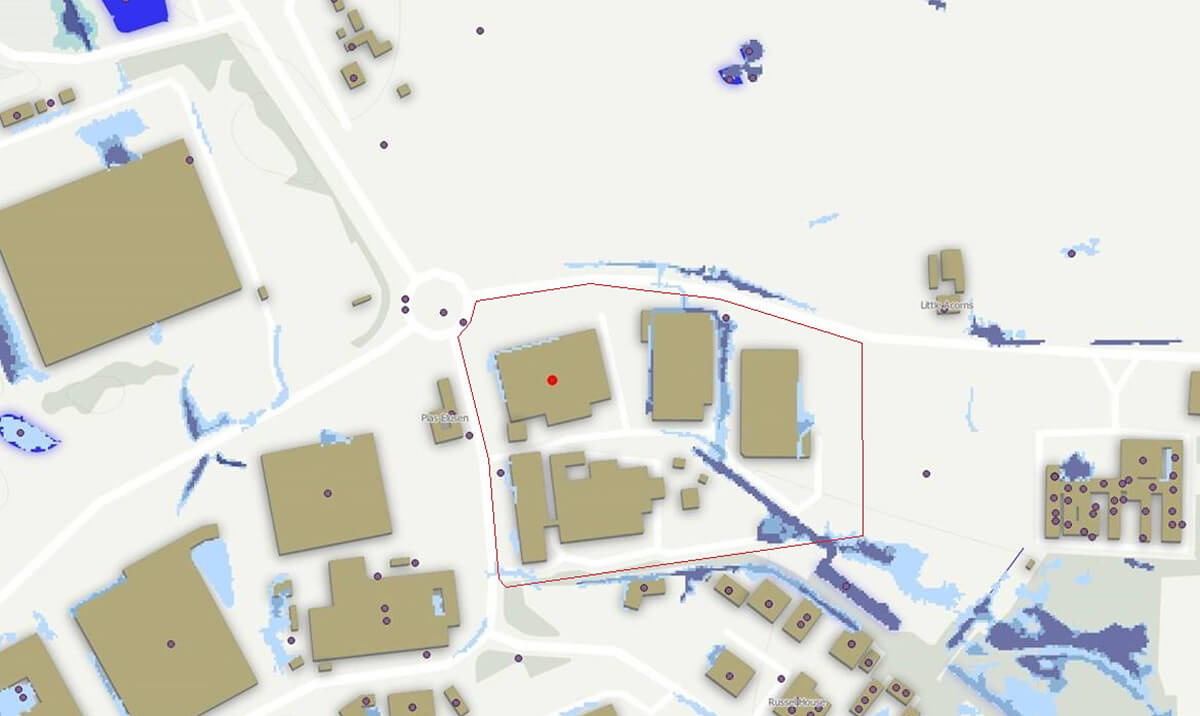
Making commercial property resilient to the forces of nature
Hiding away in the UK’s often uninspiring industrial estates lie some very high-tech and innovative businesses undertaking important or sensitive work for critical sectors and time-sensitive supply chains. One such facility is the Workhardt plant located in Wrexham, tasked with making 300 million doses of the Oxford/AstraZeneca vaccine per year. It made the headlines recently not just because of its lifesaving vaccine work but because that critical production process was under threat from flooding, during Storm Christoph. The facility was successfully protected but scares like this highlight the importance of understanding what flood risks are present against commercial properties, especially those that undertake sensitive and critical business operations.
In the last couple of weeks thousands of properties and businesses across the UK had to be evacuated as ‘Danger to Life’ warnings were enforced by many local authorities. Many regions experienced flooding at their highest recorded levels in over 10 years – and the increasing frequency and severity of such extreme weather events is incredibly damaging to communities and points to the increasing impact of climate change. The UN Secretary-General, António Guterres, has described the fight against the climate crisis as the top priority for the 21st Century in a recent speech in New York at the end of last year, where he also referenced the ‘growing force and fury’ reacting to ‘humanity’s mishandling of the environment.’
How to become resilient and mitigate against flood risk.
The frequency and certainty of climate-related threats is a timely reminder of the need for all businesses to understand how to become resilient and mitigate against threats such as flooding. The exact cause of flooding which occurred at the Workhardt facility on Wrexham Industrial Estate during Storm Christoph was not confirmed, however local Natural Resources Wales (NRW) flood mapping does provide an indication of what potentially occurred. Mapping shows that there is a potential for surface water flooding during a high, medium and low probability storm events within the site boundary*. Flooding from this source is also shown to affect the wider industrial estate. Using flood maps that are available to view online from the Environment Agency (EA) or Natural Resources Wales (NRW) is the first step in understanding any flood risk which may exist on site.
Even if your flood risk appears low it is prudent to ensure you are prepared in a way which mirrors the criticality of your business sector and the potential for dislocation from your customers.
Ashfield’s flood risk expertise and ground-breaking data can play a key role in the identification of flood risk hazards helping businesses to create resilience strategies suited to their operations. It stands to reason, though, that if a business may be vulnerable to the effects of flooding then so too are investors and lenders. Our partners at D-Risk provide support to the financial services sector, working with banks and commercial real estate operators, to provide portfolio-scale climate risk analytics including business impact indictors. Last year D-Risk were able to rapidly geospatially map all properties located within the Whaley Bridge area, overlaying the potential path of destruction that would occur due to a dam failure, deluging the contents of the Toddbrook reservoir downstream.
Using ground-breaking data intelligence, the D-Risk team can assess the impact of climate change on lending decisions and business continuity to support risk underwritingand investment decisions. This complements the property-level flood risk advice we provide at Ashfield, delivering a powerful combination of pioneering data and trusted expertise.
It’s time to rethink the industrial estate and start treating these areas as a core breeding ground for SME growth and innovation which need protection from the inevitable consequences of climate change. Contact us for phase 1 environmental assessments and to protect your business or investment.
Nature is reacting, with growing force and fury, to humanity’s mishandling of the environment — UN Secretary-General, António Guterres



